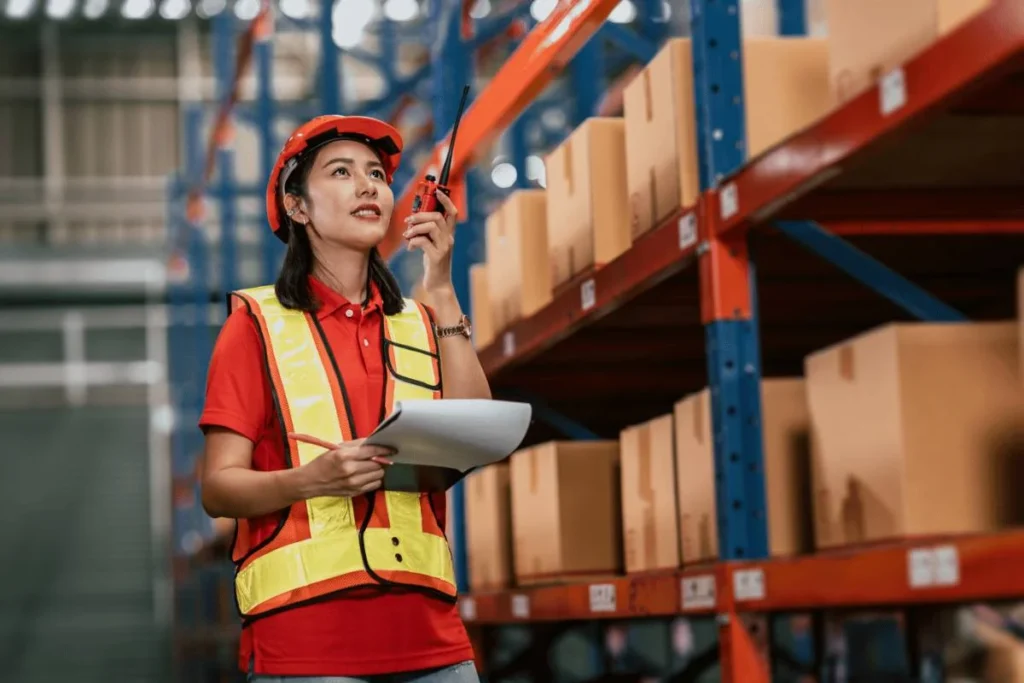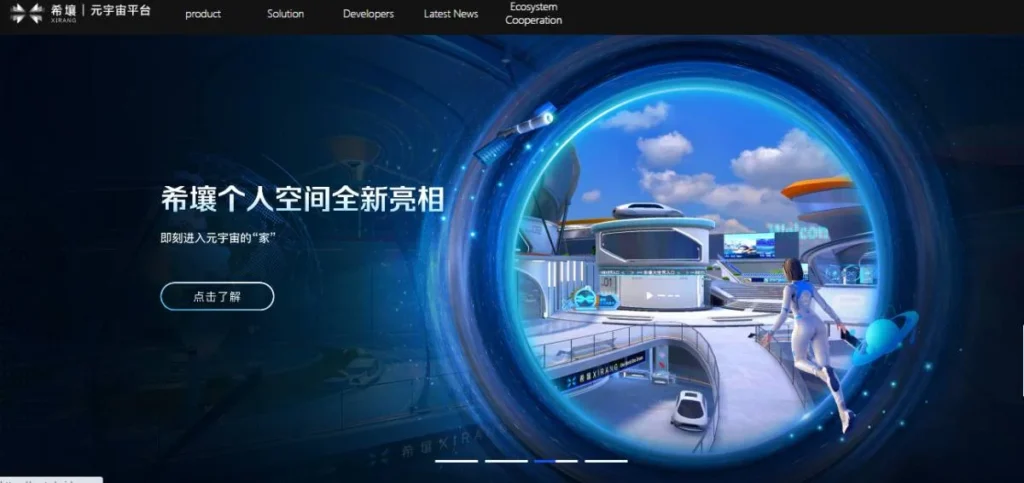CONTENT

By: Ashley Dudarenok
Updated:
China isn’t just leading the world in e-commerce growth—it’s rewriting the rules of retail altogether. In early 2025, the Ministry of Commerce reported ¥3.6 trillion ($499.6 billion) in online retail sales in just one quarter. But these numbers only scratch the surface. From algorithmic feeds to C2M manufacturing and bonded-zone cross-border fulfillment, China has created Earth’s most advanced, integrated retail environment. This blog will explore the digital infrastructure, platform dynamics, shopper behaviors, and future trends that make China a living laboratory for global retail innovation.
Here’s a summary of the key points in this article:
Contact ChoZan to localize your brand strategy for China’s next-generation retail landscape.
Three powerful, interconnected forces drive China’s e-commerce revolution: a mobile-first culture, cutting-edge digital infrastructure, and a logistics network built for speed and scale.
Together, these foundations are reshaping the expectations and behaviors of millions of consumers, creating an environment that demands agility and responsiveness from businesses worldwide.
Nearly 1.096 billion people in China go online through their smartphones. Shopping has evolved alongside this mobile-first behavior: people no longer search for products—they scroll, tap, and buy based on what appears in their personalized feeds.
This shift to “searchless shopping” is at the heart of China’s e-commerce transformation. Instead of typing product names into a search bar, users engage with short videos and influencer-led content. The moment something sparks interest, a purchase option is already built in. One swipe leads to instant checkout—no tabs, typing, or friction.
This model drives continuous discovery and impulse buying:
Traditional online storefronts are evolving to mirror content feeds rather than static product grids. The journey from inspiration to purchase is increasingly a single-tap experience.
That means global brands must think mobile-first, creating content that entertains, informs, and sells within seconds, optimized for vertical screens and fast thumbs.
China’s mobile fever is powered by a digital backbone that rivals the world’s best. As of June 2024, the country had 3.917 million 5G base stations, serving over 850 million 5G subscribers. Internet penetration hovered near 78.6%, ensuring even semi-urban and rural areas enjoy fast, stable connections.
The impact is profound. Livestream shopping—for fashion hauls or agricultural products—happens without buffering. AR try-ons for beauty and eyewear operate in real time. Short video ads load instantly, even during peak hours.
High-production studio experiences are available everywhere. The expectation inside this infrastructure is reliability. Platforms that fail to load in under a second—or live streams that break mid-demo—don’t just frustrate users; they jeopardize brand credibility.
Speed is the silent force driving China’s e-commerce dominance. In 2024 alone, China processed 174.5 billion express parcels, a 21% jump from the year before. By mid-2025, it had already crossed the 100 billion parcel mark, 35 days earlier than in 2024. This isn’t just volume—it’s precision, automation, and intelligence at a national scale.
What makes China’s logistics system exceptional is how closely it aligns with consumer behavior, especially during high-intensity shopping moments:
This level of logistics intelligence has reshaped consumer expectations:
Logistics is not just a backend consideration for global brands entering the Chinese market. It’s a critical part of the customer experience. Delays, stockouts, or slow tracking updates can erode trust before the product is even received.
These digital foundations—ubiquitous mobile usage, high-performance infrastructure, and intelligent logistics—create one of the most seamless retail environments on the planet. For professionals in global marketing, platform strategy, or retail innovation, they offer a blueprint for what’s next.
To succeed in China and stay ahead globally, brands must optimize for content-led exploration, real-time delivery expectations, and infrastructure that supports instant, uninterrupted interaction.

Image from Canva. Livestreaming commerce in China
Livestreaming is no longer a novelty in China—it’s a dominant force reshaping how people discover and buy products. By 2026, livestream shopping is projected to exceed $1 trillion in total sales, making it one of the most powerful commerce channels in the world.
What sets livestreaming apart is its ability to blend entertainment, trust, and urgency. Hosts—from beauty experts and tech reviewers to farmers and factory reps—demonstrate products live, answer real-time audience questions, and offer limited-time deals that create instant conversion moments.
For viewers, the process is seamless. There’s no need to exit the stream or open another tab. As soon as interest is sparked, a purchase option is embedded, ready to be acted on with a single tap. This immediacy turns engagement into revenue within seconds.
More than just a sales tool, live streaming has become a central format for consumer interaction. From product launches to Q&A sessions, shoppers now expect real-time engagement as part of the buying journey.
Brands that embrace this model see higher conversion rates and build deeper connections with their audience in a crowded digital space.
Livestreaming doesn’t end when the camera stops rolling—it triggers a precise chain of offline coordination. Behind each broadcast, sellers synchronize internal workflows around peak engagement windows. That includes aligning warehouse shifts, adjusting fulfillment cutoff times, and planning dispatch windows to coincide with anticipated traffic spikes.
What makes this backend system so effective isn’t just speed—it’s synchronization. Broadcast schedules are treated like flash sale events. Teams mobilize in advance and are ready to pack and ship as orders pour in minute by minute.
Some operations even simulate test runs before major live streams to ensure fulfillment speed meets expectations. This level of preparation reflects how seriously live streaming is now treated as an operational event, not just a content one.
This backend readiness can’t be overlooked for global brands new to the model. Rapid fulfillment is part of the viewer’s expectation, and if the stream converts but shipping disappoints, customer trust is hard to regain.
One dominant player doesn’t power China’s e-commerce engine—it’s an ecosystem of platforms, each with its specialization. Different apps serve different moments in the buyer journey, from live streaming to C2M manufacturing, cross-border logistics to social discovery.
Understanding how these platforms work—and how they’re used—is essential for any global brand entering the market.
As Alibaba’s flagship platforms, Taobao (C2C) and Tmall (B2C) are central to China’s e-commerce universe. As of early 2025, over 900 million domestic buyers shop across these platforms.
During the 2024 “618” festival:
These platforms offer bonded warehousing, AI dashboards, and integrated fulfillment via Cainiao, making them ideal for scaling both local and global brands.
Douyin (China’s TikTok) merges content, community, and commerce. Its algorithm replaces traditional product search, guiding users through a feed with bite-sized demos, tutorials, and shoppable videos.
Notable wins:
Douyin’s seamless integration of video, checkout, and logistics delivers frictionless conversion, ideal for impulse-driven sales.

Image from JD.com. JD Logistics’ autonomous delivery vehicle
JD.com blends retail scale with logistics dominance. The 2024 launch of JD NOW enabled 9-minute delivery from 500,000+ stores across 2,300 cities.
Standard services include:
JD’s “Jingzao” brand turns real-time data into custom factory production. It’s a leader in the C2M space, using smart inventory and robotic warehousing to optimize both manufacturing and last-mile delivery.
Pinduoduo pioneered the C2M (Consumer-to-Manufacturer) model by aggregating consumer interest and sending those signals directly to partner factories.
Instead of producing based on outdated sales projections, factories can react to real-time data searches, feedback, and mini-group purchases to create small-batch production runs that match live demand.
This model reshapes supply chains. Products trend on Pinduoduo today and reach homes within days, at prices lower than traditional retailers. It’s particularly effective in price-sensitive categories where speed, relevance, and cost all matter.
Trust is a core pillar of retail in China, and RedNote sits at the center of this dynamic. With over 300 million monthly users, RedNote is where people go not just to browse, but to believe.
Shoppers browse:
For foreign brands, RedNote helps build credibility through community validation, making it a must-use channel for skincare, gadgets, fashion, and wellness products.
Kaola remains a stronghold for cross-border shopping, especially in beauty, wellness, and food categories. With a reputation for high standards, strict curation, and bonded warehousing, Kaola provides local buyers confidence in the authenticity and traceability of international products.
Foreign brands entering through Kaola benefit from fast customs clearance, user trust in niche product categories, and integrated tools to manage sales, localization, and customer support. Kaola’s smaller but loyal user base for premium goods often delivers better conversion than larger platforms.

Image from Canva. A warehouse worker in China
E-commerce in China isn’t just changing how products are sold—it’s redefining how they’re made. Traditional manufacturing models built around long lead times and mass production give way to agile systems responding to live consumer demand.
This shift’s core is the rise of C2M (Consumer-to-Manufacturer) and DTC (Direct-to-Consumer) models. Instead of pushing inventory through wholesalers, brands now pull real-time insights from consumer behavior to trigger design and production.
Search trends, purchase patterns, and product feedback are no longer used just for marketing—they drive what gets made, when, and in what quantity. This reduces waste, increases relevance, and allows small-batch manufacturing that can adjust quickly to changing preferences.
Direct manufacturing dramatically shortens the product cycle. A trending item identified today can be prototyped, tested, and shipped within a week. Digital dashboards at factories now integrate directly with front-end e-commerce signals, replacing guesswork with live data.
This agile infrastructure is supported by:
The result? Faster releases, higher relevance, and competitive pricing—especially for digital-first brands and global sellers adapting to China’s dynamic market.
In China’s e-commerce ecosystem, trust isn’t built through product descriptions or polished ads—it’s earned through proof. Consumers want to see real people using products, hear honest opinions, and witness visible results before they buy. Authenticity is the currency of conversion.
Instead of relying on traditional marketing channels, Chinese shoppers often turn to peer reviews, user-generated content, and personal recommendations. Before deciding, they actively search for first-hand experiences—how a product looks, feels, or performs in everyday life.
Video reviews, annotated photos, and short-form testimonials are especially influential. These formats don’t just provide information—they create relatability.
Shoppers want to know:
This expectation for authenticity is even more pronounced regarding new, unfamiliar, or foreign products. In these cases, social proof acts as a trust bridge. Verified feedback, unfiltered commentary, and localized content help break down skepticism and reduce hesitation.
For brands, the takeaway is clear: social validation isn’t a supplement—it’s a prerequisite. Investing in community-driven content, amplifying authentic voices, and encouraging organic sharing builds more than awareness—it builds belief.

Image from Canva. Facial recognition payment
E-commerce hasn’t killed brick-and-mortar retail in China—it has forced it to evolve. Traditional formats like department stores and legacy malls are rapidly losing relevance, especially among younger, mobile-first consumers.
Many large department stores and malls have seen sharp declines in foot traffic and sales declines. In one industry survey, 61% of department store operators in China reported decreased foot traffic in 2024, a quarter experiencing drops of over 10% year-on-year.
Many large chains are closing locations or rethinking their role entirely. But rather than disappearing, physical retail is reborn through omnichannel integration—blending online convenience with offline experience.

Image from Hema.
Modern stores are no longer just points of sale. They act as:
Retailers increasingly sync their online and offline operations. Inventory systems are unified, loyalty programs are connected across channels, and customer interactions—whether online or in-store—feed into a single behavioral database.
Advanced technology enables seamless online-offline integration:
This retail transformation isn’t theoretical—it’s happening across hundreds of stores.
Hema is the poster child for China’s new retail. By late 2024, it had over 430 locations and finally turned a profit after years of rapid iteration.
In a single store, customers can:
Hema stores double as data centers, restaurants, logistics hubs, and immersive shopping experiences.
These brands understand that physical presence must support digital scale. They’ve turned stores into retention, fulfillment, and engagement tools, not just revenue per square foot.
China’s cross-border e-commerce (CBEC) sector has seen exceptional growth, reaching a historic high in 2024. The total cross-border trade volume hit 2.71 trillion RMB, with exports growing 16.9% year-on-year, reaching 2.15 trillion RMB.
China’s bonded warehouses continue to drive CBEC’s efficiency by enabling tax-free storage until products are ordered. This allows global brands to store goods closer to the consumer, ensuring faster fulfillment times and improved cash flow.
Today, over 160 bonded zones in strategic cities reduce shipping times and simplify the entry process for foreign goods. This system allows brands to bypass the need for a physical local presence, cutting operational costs while ensuring timely delivery.
While bonded zones offer efficient logistics, navigating the regulatory framework remains essential for brands. New policies have streamlined the customs clearance process and reduced barriers for international goods. For example, China’s Cross-Border E-Commerce Retail Import Tax Policy allows specific goods to enter without duties, encouraging the growth of niche categories like beauty products, health supplements, and premium food.
Global brands must also adapt to local market standards by adjusting packaging, labels, and product descriptions. This ensures compliance with China’s strict regulatory requirements, making it easier for consumers to trust imported goods.
Building trust remains the most significant challenge for international brands in CBEC. Shoppers need assurance regarding product authenticity and reliable after-sales support.
To overcome this, global brands should:
Brands that can earn consumer trust by aligning with local expectations and providing transparent product information will outperform those that rely solely on foreign prestige.
China’s e-commerce ecosystem is entering a new phase defined by scale, precision, personalization, and platform independence. Brands are no longer just trying to reach users; they’re building systems to predict their needs, control their experiences, and retain their loyalty.
At the heart of this shift is AI-driven personalization. Platforms like Taobao, JD.com, and Douyin now use behavioral data, real-time search trends, and purchase signals to curate what each user sees dynamically.
Meanwhile, brands invest heavily in private traffic—direct-to-consumer ecosystems built outside platform algorithms. Sellers can use WeChat groups, mini-programs, Xiaohongshu circles, and brand-owned apps to engage users directly, control messaging, and drive repeat purchases without relying on paid traffic.

Image from Baidu’s XiRang website
China’s e-commerce sector is poised for a transformative shift by 2025, driven by advancements in artificial intelligence (AI), immersive shopping experiences, and a strategic pivot towards direct-to-consumer (DTC) models. These developments reshape the digital retail landscape, influence consumer behaviors, and redefine business strategies.
While content remains king, China’s retail infrastructure is evolving to make digital shopping more tactile, immersive, and real-time. Shoppers can now try on lipstick shades using AR filters, tour 3D virtual stores during festivals, or interact with AI-powered assistants that mimic a live consultation.
At the same time, fulfillment and supply chains are becoming smarter and more responsive. AI is used to:
Experimental platforms like Baidu’s XiRang and ByteDance’s Project Puff also explore the metaverse layer, where digital avatars browse virtual malls, try on clothes, and attend product launches in immersive environments.
The result is an intelligent, multi-channel, and frictionless retail stack. Shopping no longer begins with a search bar—it starts in a video feed, a private community, or a personalized app homepage. And it ends wherever the customer chooses: in a live stream, in-store, or with a package arriving in 20 minutes.

Understanding China’s digital retail landscape takes more than reading trend reports—it demands insight from those shaping it. That’s where ChoZan comes in.
ChoZan is a consultancy and learning platform founded by Ashley Dudarenok, one of the world’s most recognized experts in China’s digital economy. With over 15 years of experience in Greater China, she has advised global brands including Coca-Cola, P&G, BMW, Disney, and Shiseido.
Ashley has also been:
Her team at ChoZan doesn’t just follow trends—they help global companies interpret, localize, and act on them.
Through custom programs and hands-on support, ChoZan helps teams:
Custom qualitative and quantitative research to uncover what’s really happening on the ground.
Our research projects help you:
On-the-ground, curated tours for executives and strategy teams to directly experience China’s innovation.
Our immersion programs enable you to:
Learn more about our China Learning Expedition Tour and how it helps global leaders gain first-hand insights into China’s fast-moving digital ecosystem.
High-impact talks delivered by Ashley Dudarenok at corporate events, strategy offsites, and global conferences.
Keynotes help your team:
Discover more about Ashley’s work as a keynote speaker and how her sessions can empower your team with actionable insights.
Modular, high-impact workshops tailored to your team’s goals.
Our training sessions empower you to:
Advisory support when you need clarity—fast.
These services help you:
Learn more about our China consulting services and how they can accelerate your market entry and growth.
Whether you’re planning market entry, preparing for leadership learning, or simply trying to keep pace with China’s next wave of innovation—ChoZan provides the clarity, structure, and expert support to help you act confidently.
Have a project in mind or want to explore collaboration? Contact the ChoZan team now.
According to the Ministry of Commerce, over 29% of China’s retail sales come from online channels as of mid-2025. In some product categories, such as fashion, beauty, and consumer electronics, the share is significantly higher, often exceeding 50%.
Livestreaming creates real-time interaction, trust, and urgency. Shoppers can ask questions, watch demos, and buy immediately through a seamless checkout. With conversion rates far higher than traditional product pages, livestreaming now accounts for nearly one-third of all e-commerce GMV in China and is projected to surpass $1 trillion by 2026.
C2M (Consumer-to-Manufacturer) allows factories to produce based on real-time platform demand. Pinduoduo pioneered this model in China by aggregating user intent and routing it directly to manufacturers. It reduces waste, lowers prices, and allows hyper-targeted production runs.
Physical stores have evolved into experience centers, pickup hubs, and livestream studios. Retailers like Hema, Xiaomi, and Starbucks blend offline presence with online infrastructure, creating a seamless omnichannel loop where stores support digital transactions.
AI drives product recommendations, price optimization, customer service, and inventory planning. On platforms like Taobao, AI-curated feeds now power most user sessions. Personalization engines are responsible for much of the conversion lift during primary campaigns.
Same-day or next-day delivery is standard in 95% of Tier 1 and 2 cities. Platforms like JD.com even offer under 10-minute delivery in select districts. Urban warehouses and smart routing allow real-time fulfillment based on livestream events or trending product spikes.
Chinese shoppers rely more on platform discovery, short-form content, and peer reviews. Rather than searching for products, they often let the app guide them. Shopping is seen as entertainment, with content and community driving decisions, not specs or discounts.
Private traffic refers to customer groups that brands control directly on WeChat, RedNote, or private mini-programs. These channels allow for direct engagement, lower ad costs, and higher repeat purchase rates. In 2025, it will be one of China's most valuable assets for DTC brands.
China has tightened oversight of online advertising, product safety, livestream behavior, and cross-border tax compliance. Platforms are required to enforce stricter content moderation and verify the identities of sellers. While the environment is more regulated, platforms like Tmall Global and JD now offer built-in tools to help brands remain compliant.
By subscribing to Ashley Dudarenok’s China Newsletter, you’ll join a global community of professionals who rely on her insights to navigate the complexities of China’s dynamic market.
Don’t miss out—subscribe today and start learning for China and from China!

A List of 14 Major MCNs in China


Top Online B2B Chinese Channels
Ashley Dudarenok is a leading expert on China’s digital economy, a serial entrepreneur, and the author of 11 books on digital China. Recognized by Thinkers50 as a “Guru on fast-evolving trends in China” and named one of the world’s top 30 internet marketers by Global Gurus, Ashley is a trailblazer in helping global businesses navigate and succeed in one of the world’s most dynamic markets.
She is the founder of ChoZan 超赞, a consultancy specializing in China research and digital transformation, and Alarice, a digital marketing agency that helps international brands grow in China. Through research, consulting, and bespoke learning expeditions, Ashley and her team empower the world’s top companies to learn from China’s unparalleled innovation and apply these insights to their global strategies.
A sought-after keynote speaker, Ashley has delivered tailored presentations on customer centricity, the future of retail, and technology-driven transformation for leading brands like Coca-Cola, Disney, and 3M. Her expertise has been featured in major media outlets, including the BBC, Forbes, Bloomberg, and SCMP, making her one of the most recognized voices on China’s digital landscape.
With over 500,000 followers across platforms like LinkedIn and YouTube, Ashley shares daily insights into China’s cutting-edge consumer trends and digital innovation, inspiring professionals worldwide to think bigger, adapt faster, and innovate smarter.
Please check your email and confirm your subscription.

Please check your email and confirm your subscription.

Please check your email and confirm your subscription.